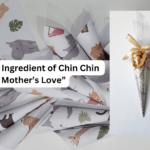
Our Global Plates
One of the few means of universal communication in the world is food. Everyone thinks about food throughout the day, but everyone has a distinct perspective on it. The way we regard food and its significance in our lives, is influenced by our culture and geographic location on Earth.
Through trade, travel, or immigration, one nation can influence the culture of another. This process is known as cultural diffusion. In today’s culture, cultural diffusion is normal and occurs everywhere—from new technologies to culinary establishments. Social boundaries must be crossed in order for people to engage with one another, and interactions promote the spread of culture.
Food has a lot of effects on us. Food serves as nourishment, shapes our perceptions of nature, and is a social good in our culture, can serve as an artistic inspiration, satisfies a primal need, and has an impact on our spirituality, among other uses.
If we tie humanity back to its roots, we would arguably all end up in the same place. We would probably be eating the same food given that we dawned from the same place.
This blog will highlight our similarities in terms of the same food we eat, i.e Chin Chin just under a different name, in:
- Africa
- Europe
- Asia
Chin Chin is a Cameroonian sweet delicacy made of flour which is deep fried for a true authentic taste. It is sweet; it is crunchy and really addictive. It has its counterparts spread across the world, for instance, in:
Africa – Chin Chin also makes its way to Nigeria with the same name and taste. In Kenya, Chin Chin is known as ‘Mandazi’, a sweet puff snack with almost similar ingredients and taste.
Europe – Germany has ‘Ollybollen’ a kind of doughnut that is the same as Chin Chins and not very far in Italy, they have what they call ‘Pasta Fritta’ which is sweet, crispy fried decadence.
Asia – Asia carries a wide diversification of Chin Chins, India has a brethren of Chin Chin they call ‘Shakar Para’. Shakarpara, sometimes referred to as Shankarpali, is a crunchy snack with a hint of sweetness that is produced using just four common household ingredients. These easy-to-make, bite-sized fried Indian cookies are a favourite during holidays like Diwali and Holi.
In the southern part of India, in Goa – they have KulKul. Filipino people have a similar sweet fried delicacy called Uraro which takes on various forms like Uraro cookies, etc,. Tibet has Khabsey, which involves a few more ingredients than Chin Chin but ultimately tastes pretty close and just like Chin Chins.
Has culinary culture brought about changes in some regions along with its advances and transformations? In many places, food culture might take on a new visual identity without sacrificing its existing traditions and rituals, which would aid in our understanding of both our own and other cultures. The distinctive conditions under which various areas identify themselves give rise to the cosmopolitan nature of today’s diverse cuisines while maintaining their authenticity and cultural preservation.
Because culture shapes who we are as individuals and as a society, it’s preservation is a vital component of human existence. It is up to us to protect the culture that our forefathers left behind for the coming generations
While we celebrate the unity of humankind, we must also strive to preserve our cultural bits through food. One such person is Gaelle, she is a one-woman entrepreneur based in Canada who runs All African Delights a business that seeks to advance the representation of a Cameroonian delicacy called ‘Chin Chin’, essentially a fried sweet treat that’s pure decadence.










